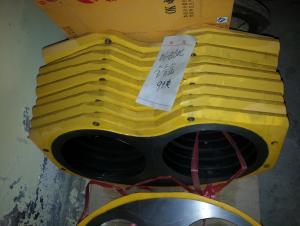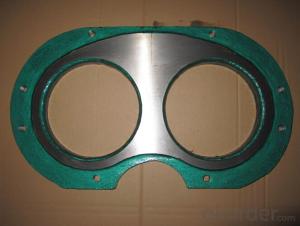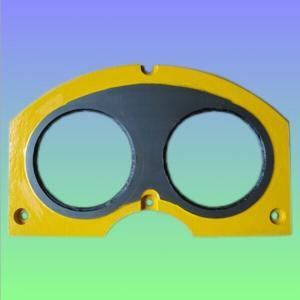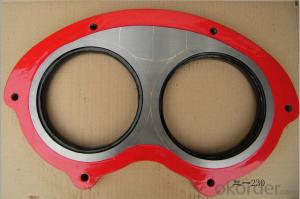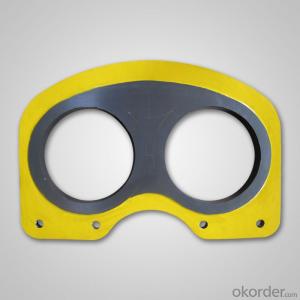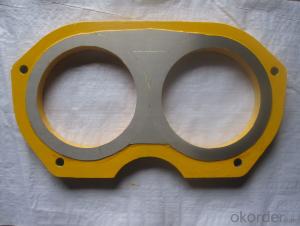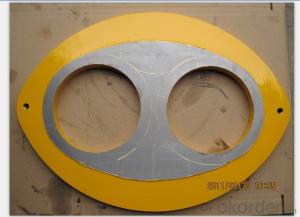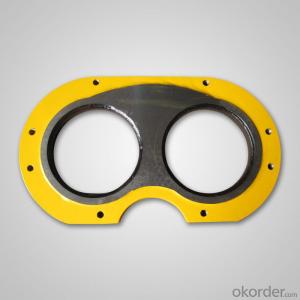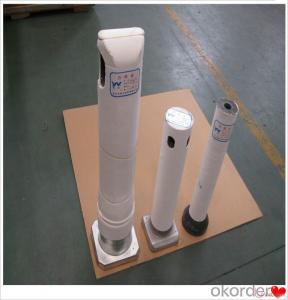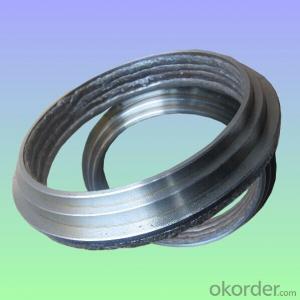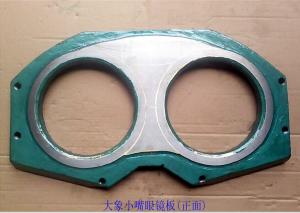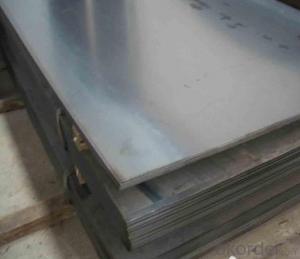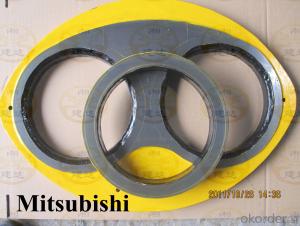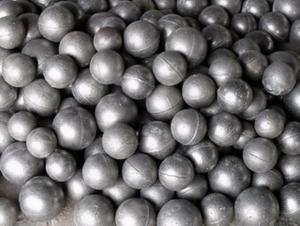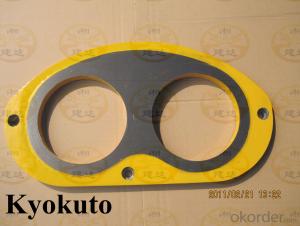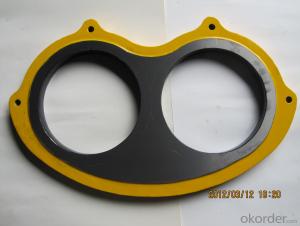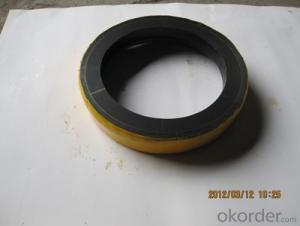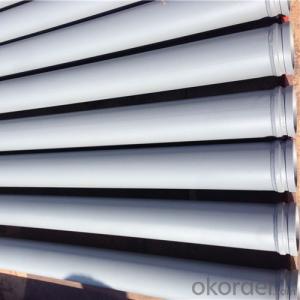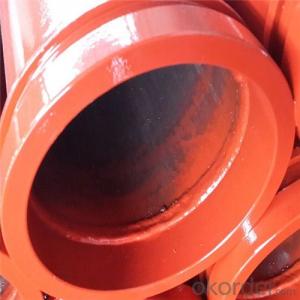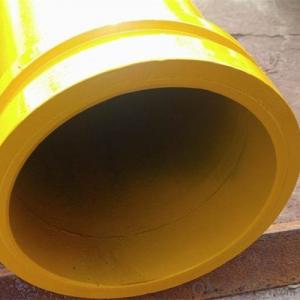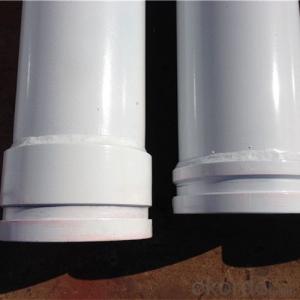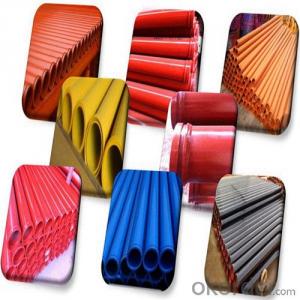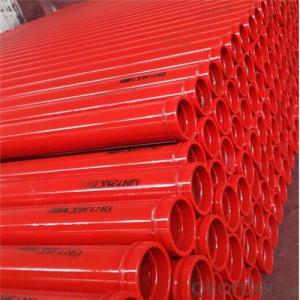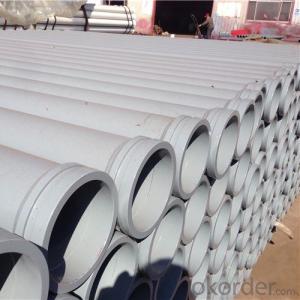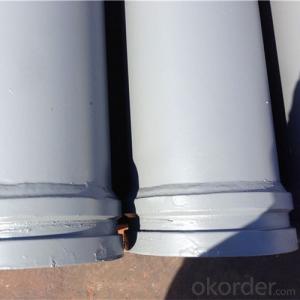Spectacle Wear Plate
Spectacle Wear Plate Related Searches
Plasma Cutting Aluminum PlateHot Searches
China Cutting Aluminum Plate Wholesale Cutting Aluminum PlateSpectacle Wear Plate Supplier & Manufacturer from China
Okorder.com is a professional Spectacle Wear Plate supplier & manufacturer, offers integrated one-stop services including real-time quoting and online cargo tracking. We are funded by CNBM Group, a Fortune 500 enterprise and the largest Spectacle Wear Plate firm in China.Hot Products
FAQ
- Hydraulic cylinders in a concrete pump should be inspected regularly, ideally every 500 hours of operation or at least once a year, whichever comes first. However, it is important to note that the frequency of inspections may vary depending on the specific conditions and usage of the concrete pump. During inspections, qualified technicians should thoroughly examine the hydraulic cylinders for any signs of wear, damage, or leaks. They should also check the alignment, piston rods, seals, and other components to ensure proper functioning. If any issues are found, such as excessive wear or leaks, it is recommended to replace the hydraulic cylinders promptly to prevent further damage and maintain optimal performance. Regular inspections and timely replacements of hydraulic cylinders are crucial for ensuring the safety, efficiency, and longevity of a concrete pump. Neglecting proper maintenance can lead to costly repairs, decreased productivity, and even accidents. Therefore, it is essential to follow manufacturer's guidelines and consult with professionals to determine the appropriate inspection and replacement intervals for hydraulic cylinders in a concrete pump.
- A faulty hydraulic filter can have several negative effects on a pump's hydraulic system. The primary purpose of a hydraulic filter is to remove contaminants such as dirt, debris, and other particles from the hydraulic fluid, ensuring the fluid is clean and free from impurities. When the filter is faulty or clogged, it fails to effectively filter the fluid, leading to various problems. Firstly, the presence of contaminants in the hydraulic fluid can lead to increased wear and tear on the pump's components. The particles can cause abrasion and damage to the pump's moving parts, including the pistons, valves, and seals. This can result in decreased efficiency and performance of the pump, as well as potential leaks or failures. Secondly, a faulty hydraulic filter can cause a decrease in overall system pressure. As the contaminants accumulate in the fluid, they can restrict the flow of hydraulic fluid, leading to increased resistance within the system. This, in turn, can cause a drop in pressure, resulting in reduced hydraulic power and slower operation of the pump. Furthermore, a clogged filter can also lead to increased heat generation within the hydraulic system. The presence of contaminants restricts the fluid flow, causing the pump to work harder and generate more heat. This can lead to overheating of the hydraulic fluid, which can further damage the pump and other components of the system. Overheating can also cause the hydraulic fluid to degrade, reducing its lubricating properties and potentially leading to further wear and damage. In summary, a faulty hydraulic filter can affect the pump's hydraulic system by causing increased wear and tear on components, decreased system pressure, slower operation, increased heat generation, and potential fluid degradation. Regular maintenance, including timely replacement of hydraulic filters, is essential to ensure the efficient and reliable functioning of a pump's hydraulic system.
- A faulty water pump can have several negative effects on a concrete pumping operation. Firstly, a water pump is responsible for supplying water that is used to mix the concrete and maintain its proper consistency. If the water pump is faulty and not functioning correctly, it may not be able to supply the required amount of water, resulting in the concrete mix being too dry or not well-mixed. This can lead to a poor-quality concrete mix that is difficult to pump and may not set properly, compromising the structural integrity of the concrete. Additionally, a faulty water pump can affect the efficiency and productivity of the concrete pumping operation. If the pump is not working efficiently, it may take longer to mix and deliver the concrete, causing delays in the construction process. This can lead to increased costs and potential disruptions to project timelines. Furthermore, a faulty water pump can also impact the safety of the concrete pumping operation. Adequate water supply is essential for preventing the concrete from overheating during the pumping process. If the water pump fails to supply enough water, the concrete can heat up rapidly, leading to a phenomenon called thermal cracking. Thermal cracking weakens the concrete and can cause it to fail prematurely, posing a safety risk to workers and the overall structure. In summary, a faulty water pump can negatively impact a concrete pumping operation by resulting in poor-quality concrete mixes, decreased efficiency and productivity, and potential safety hazards. It is crucial to regularly inspect and maintain water pumps to ensure their proper functioning and prevent any detrimental effects on the concrete pumping process.
- The role of a concrete pump seal is to prevent leakage and maintain the pressure within the pumping system. Concrete pumps are used to transfer liquid concrete from one location to another, typically from a mixer truck to a construction site. These pumps operate under high pressure to ensure the concrete flows smoothly through the pipeline. A concrete pump seal is a vital component that helps maintain the integrity of the pumping system. It is usually made of durable materials such as rubber or polyurethane, designed to withstand the high pressures and abrasive nature of concrete. The seal is located at the connection points between various sections of the pipeline, including the pump, pipeline joints, and hose connections. The primary function of the seal is to prevent concrete from leaking out of the system. Concrete is a viscous material, and any leakage can cause significant problems, such as a decrease in pumping efficiency, wastage of concrete, and potential damage to the surrounding environment. The seal ensures that the pumping system remains leak-free, allowing for efficient and continuous concrete transfer. Additionally, the seal helps maintain the required pressure within the pumping system. Concrete pumps rely on consistent pressure to ensure the concrete is delivered smoothly and evenly. Any pressure loss due to leakage can lead to uneven flow or blockages in the pipeline, affecting the overall performance of the pump. By sealing the connection points, the seal helps maintain the desired pressure, ensuring the concrete is pumped efficiently. Overall, the role of a concrete pump seal is to prevent leakage, maintain pressure, and ensure the smooth and efficient transfer of concrete from the source to the destination. It is an essential component that contributes to the overall effectiveness and reliability of concrete pumping operations.
- One can ensure proper documentation and record-keeping for concrete pump spare parts by implementing a structured system. This system should include keeping a detailed inventory of all spare parts, including their quantities, descriptions, and specifications. Additionally, it is essential to maintain a log of all incoming and outgoing spare parts, noting the date, purpose, and responsible personnel. Regular audits and reconciliations should be conducted to ensure accuracy and identify any discrepancies. Proper labeling and organization of physical storage areas, as well as digitizing records, can further enhance efficiency and accessibility. Regular training and clear guidelines for staff involved in handling spare parts documentation will also contribute to maintaining accurate records.
- Yes, there are specific guidelines for the disposal of old or damaged concrete pump spare parts. It is important to properly dispose of these parts to ensure environmental sustainability and to adhere to local regulations. Here are some guidelines to follow: 1. Identify hazardous materials: Before disposing of any concrete pump spare parts, it is crucial to determine if they contain any hazardous materials such as oils, lubricants, or chemicals. These substances require special handling and cannot be disposed of in regular waste streams. 2. Separate recyclable materials: If the spare parts are made of materials that can be recycled, such as metal or plastic, it is recommended to separate them from other waste. Recycling these materials helps in conserving resources and reducing the strain on landfill sites. 3. Contact local waste management authorities: Different regions have different guidelines and regulations for the disposal of specific materials. It is advisable to get in touch with the local waste management authorities to understand the proper procedures for disposing of concrete pump spare parts in your area. 4. Arrange for proper disposal: Once you have identified any hazardous materials and separated recyclable parts, arrange for their proper disposal. This may involve contacting specialized waste management companies that can handle hazardous materials or taking them to designated recycling centers. 5. Avoid illegal dumping: It is essential to avoid illegal dumping of old or damaged concrete pump spare parts. This can harm the environment and may result in fines or penalties. Always dispose of these parts through legal and responsible channels. By following these guidelines, you can ensure the proper disposal of old or damaged concrete pump spare parts, minimize the impact on the environment, and comply with local regulations.
- What are the skills of concrete pump?
- The operator and equipment management personnel should carefully read the instructions, grasp the relevant knowledge of the structural principle, use and maintenance as well as pumping concrete; use and operation of the concrete pump, should be strictly in accordance with the execution of instructions

